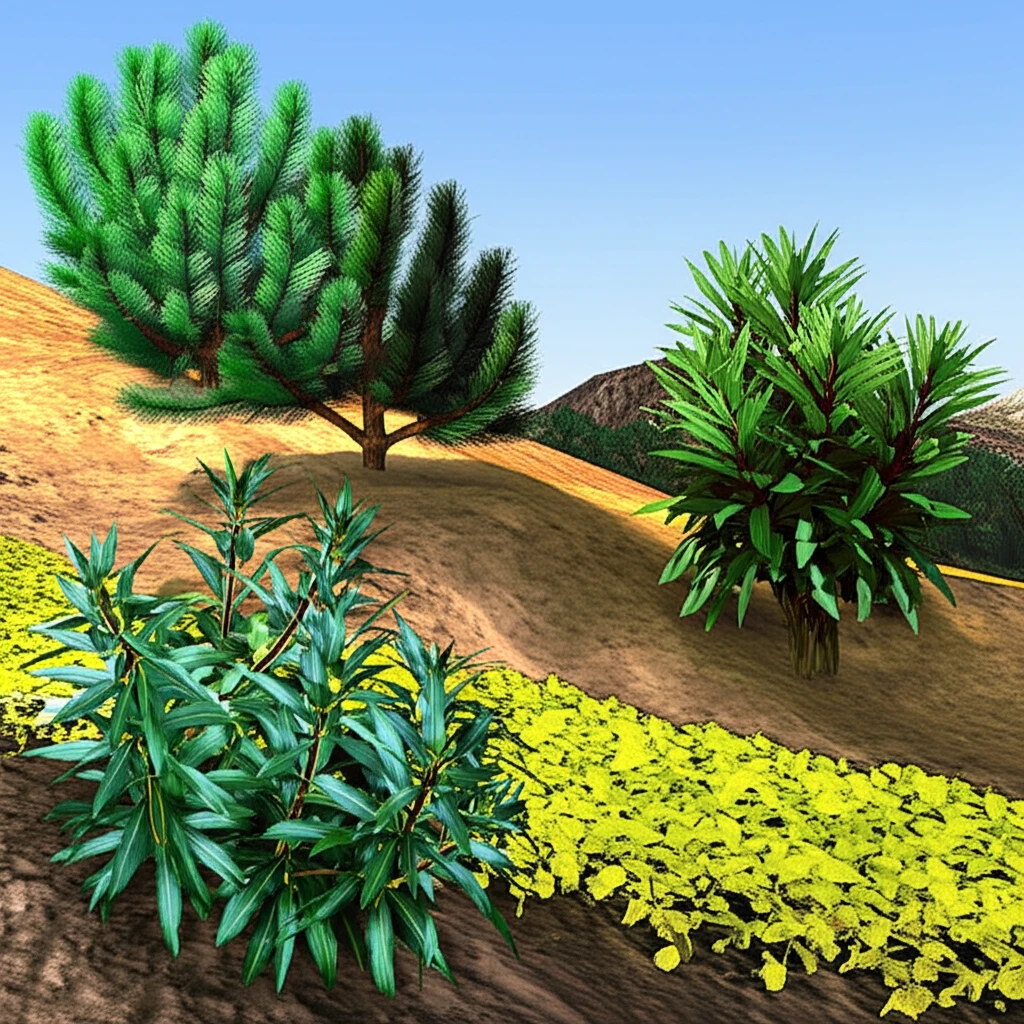
Nature's Blueprint: How Altitude and Environment Shape Medicinal Plants
"Uncover the surprising ways altitude, climate, and soil conditions influence the growth and characteristics of Pluchea indica and other vital Asteraceae plants."
For centuries, the Asteraceae family has been prized for its diverse medicinal benefits and biopesticidal properties. These adaptable plants thrive in various habitats, yet their morphology and physiological characteristics are heavily influenced by environmental factors. This raises a crucial question: How do environmental conditions shape the development and medicinal qualities of these valuable plants?
A recent study investigated the impact of habitat altitude and environmental factors on three key Asteraceae species: Pluchea indica, Ageratum conyzoides, and Elephantopus scaber. Researchers analyzed plant samples from different altitudes in East Java, Indonesia, examining stem height, leaf width, and environmental conditions to uncover correlations between altitude and plant characteristics.
The study's findings reveal fascinating insights into how environmental factors like altitude, climate, and soil composition affect the morphology of these plants, ultimately impacting their potential medicinal applications and ecological roles. Understanding these relationships is crucial for optimizing cultivation practices and harnessing the full therapeutic potential of Asteraceae species.
Decoding the Environmental Impact on Plant Development

The research team collected samples of Pluchea indica, Ageratum conyzoides, and Elephantopus scaber from three distinct locations in East Java, Indonesia, each characterized by different altitudes:
- Low-Altitude (Bangkalan-Madura: 28, 3-31, 72 m asl): Characterized by sandy soil, high water content, low organic matter, and high soil temperature, humidity, and light intensity.
- Intermediate-Altitude (Trawas-Mojokerto: 727-937 m asl): Dominated by clayey soil, high carbon and nitrogen content, and good soil and air humidity.
- High-Altitude (Coban Talun-Bumiaji Batu: 1303-1322 m asl): Features sandy soil with high water levels, total nitrogen, oxygen levels, soil pH, and organic matter content.
Implications and Future Directions
This research highlights the critical role of environmental factors in shaping the growth and development of medicinal plants like Pluchea indica, Ageratum conyzoides, and Elephantopus scaber. The study's findings have significant implications for optimizing cultivation practices to enhance the medicinal properties of these species.
Understanding the specific environmental conditions that promote desirable traits can lead to more effective cultivation strategies, ensuring a consistent supply of high-quality medicinal plants for herbal medicine and biopesticide applications. Further research is needed to explore the underlying genetic mechanisms that govern these morphological adaptations.
By unraveling the intricate relationships between genes, environment, and plant development, scientists can unlock new opportunities for improving crop yields, enhancing medicinal properties, and promoting sustainable agriculture. This knowledge is essential for harnessing the full potential of these valuable plant resources while preserving ecological balance.
